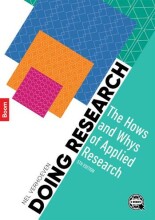Summary: Internal Environment
- This + 400k other summaries
- A unique study and practice tool
- Never study anything twice again
- Get the grades you hope for
- 100% sure, 100% understanding
Read the summary and the most important questions on Internal environment
-
1 Influences of the external environment and the organization's culture
-
1.0 Internal Environment
This is a preview. There are 21 more flashcards available for chapter 1.0
Show more cards here -
organization’s environments change frequently
In a stable environment the components in an organization’s environment change very little -
Describe the constraints and challenges facing managers in today’s external environment
· The external environment includes those factors and forces outside the organization that affect its performance.
· The main components of the external environment are economic, demographic, political/legal, sociocultural, technological, and global.
· These components can constrain and challenge managers because they have an impact on jobs, environmental uncertainty, and stakeholder relationships. -
3 Managing Change and Disruptive Innovation
This is a preview. There are 25 more flashcards available for chapter 3
Show more cards here -
Human resources variables
· High commitment to training and development
· High job security- Creative People
- Creative People
-
Keep external controls minimal
rules, regulations, policies, and similar organizational controls are kept to a minimum. -
4 Managing Strategy
This is a preview. There are 9 more flashcards available for chapter 4
Show more cards here -
Why strategy management important
Has a positive impact on performance
• Helps managers decide how to act in face of change and
uncertainty
• Helps complex and diverse organizations work together -
Step 3 Doing Internal analysis
-Resources: an organization’s assets that are used to develop, manufacture, and deliver products to its customers.
-Capabilities: an organization’s skills and abilities in doing the work activities needed in its business.
-Core competencies: the organization’s major value- creating capabilities that determine its competitive weapons.
-SWOT analysis
-Strengths: any activities the organization does well or its unique resources
-Weaknesses: activities the organization does not do well or resources it needs but does not possess
-SWOT analysis: an analysis of the organization’s strengths, weaknesses, opportunities, and threats -
Step 4 formulating strategies
Three main types of strategies managers will formulate:
• Corporate
• Competitive
• Functional -
Step 6 Evaluating result
How effective have strategies been at helping the organization achieve its goals
• What adjustments are necessary?
- corporate
-competitive
-fucntional -
Types of Corporate strategy: Growth strategy
a corporate strategy that’s used when an organization wants to expand the number of markets served or products offered, either through its current business(es) or through new business(es)
• Concentration
• Vertical integration
• Horizontal integration
• Diversification -
How are corporate strategies managed?
BCG matrix: a strategy tool that guides resource allocation decisions on the basis of market share and growth rate of SBUs
• Stars
• Cash cows
• Question marks
• Dogs
- Higher grades + faster learning
- Never study anything twice
- 100% sure, 100% understanding
































